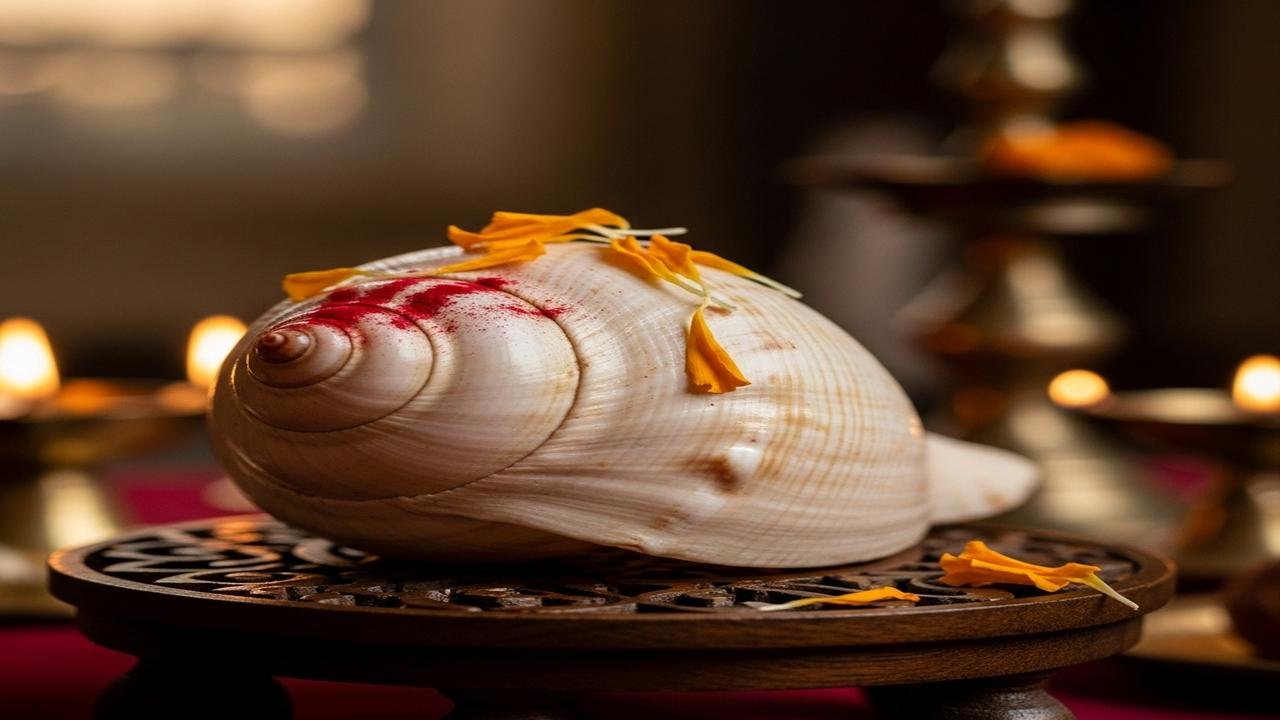Shankh Conch Shell in Puja Reveals Secret You Never Knew

The Gentle Call: The Symbolism of the Conch Shell in Pujas
In the cool hours before sunrise, I often remember my grandmother standing at the threshold with a brass conch in her hand. She would raise it to her lips and blow. The clear, resonant note would ripple through our lane and into the waking day. That single sound seemed to wrap the entire household in a sacred pause. This is the living magic of the conch shell, or shankh, woven into the rhythm of Hindu pujas and daily devotion.
The conch shell carries many meanings at once. It is a trumpet, an offering, and a symbol. In Hinduism, it is closely associated with Lord Vishnu, who holds the divine conch called Panchajanya. The sound of the shankh is believed to banish negativity and invite auspiciousness. When the shell is blown during puja, it signals the presence of the divine and calls people to attention — body, mind, and heart.
There is also a deeper symbolic language in the shape and sound of the conch. Its spiral form suggests growth and continuity, a reminder of life’s unfolding journey. The sound that emerges—long and pure—represents the cosmic vibration, often compared to the sacred syllable Om. In this way, the shankh becomes a bridge between the human and the cosmic, helping worshippers feel connected to something larger than themselves.
Historically, conch shells were used in temples and palaces. The royal blow of a shankh announced victories and important events. Over centuries, the shell found a softer role at the puja altar, where it became a part of everyday worship. Art, scripture, and folk tales celebrate the shankh, making it a recurring image in Indian culture.
Practices around the conch in pujas are simple yet meaningful. Devotees often cleanse the shell and offer water, flowers, and sandalwood before blowing it. In many homes, the shankh is sounded at the start and end of the prayer, marking a sacred frame for the ritual. In temples, the conch is sometimes combined with bells, lamps, and incense to create a multi-sensory offering.
- Purity and Preparation: The shankh is washed and sanctified before use, reminding devotees of inner cleanliness.
- Timing: Blown during dawn, arti, and special ceremonies to invite auspiciousness.
- Offerings: Often filled with water and offered to deities, or used to sprinkle holy water for blessings.
- Music and Chant: Its sound complements mantras, creating a sacred cadence in puja.
Today, the conch keeps its presence alive in both rural and urban homes. Some families use natural shells, while others prefer metal replicas for durability and ethical reasons. This modern shift reflects a caring balance: honoring tradition while respecting nature. Many temples now encourage responsible sourcing and the use of crafted shankhs rather than live-harvested shells.
The conch also reaches beyond Hinduism. It appears in Buddhist rituals and other cultural practices across South Asia, showing how a simple object can carry shared human longing for protection, clarity, and celebration.
When we blow the shankh, we are doing more than following a ritual. We are remembering the sound that welcomed us into life—the first cry that met our ears. We are inviting clarity into our thoughts and a gentle courage into our actions. The conch teaches us to speak clearly, act with purpose, and return to the rhythm of devotion in daily life.
Conclusion: The next time you hear a conch, pause and listen. Let its tone remind you of presence, purity, and the quiet power of ritual. In that moment, you become part of a long, living tradition that celebrates life with sound, reverence, and love.
